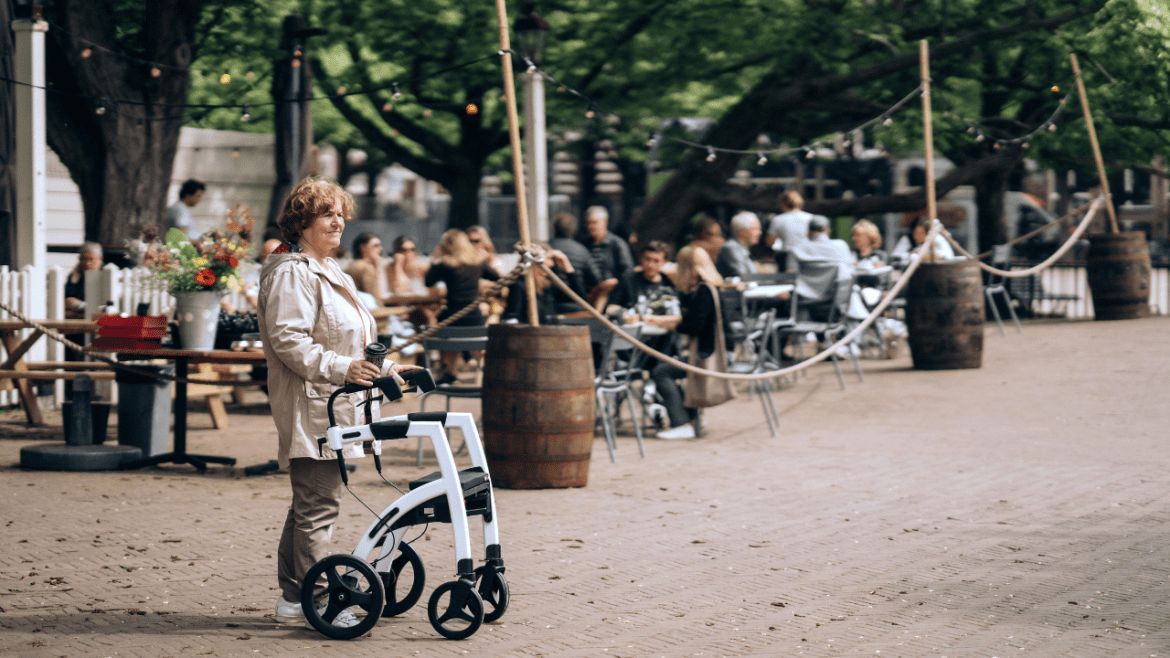Top 5 Items A Senior Needs Post Stroke
When a senior experiences a stroke, life changes drastically. A stroke can severely impact mobility, speech, and cognitive abilities, making everyday tasks more difficult. Caregivers often face the challenge of ensuring their loved ones are safe, comfortable, and able to regain independence.
Recovery tools play a significant role in this journey. In the aftermath of a stroke, certain items are essential for the rehabilitation process. They not only assist in physical recovery but also enhance quality of life.
1. Mobility Aids – Regaining Independence
One of the most challenging aspects of stroke recovery is mobility. Seniors may experience partial paralysis, weakness, or loss of coordination, making it difficult to walk. Mobility aids, such as canes, walkers, and wheelchairs, provide essential support. A walker, especially one with a seat, can help a senior move around while preventing falls. It encourages them to be mobile, even if only for short distances.
Some stroke survivors may need more support, such as a wheelchair. It allows them to safely move around their home or outdoors. By having these aids available, seniors can regain some sense of independence. Without these tools, they might become reliant on others for every movement, which can be disheartening.
2. Shower and Bathroom Safety Equipment – Maintaining Dignity
The bathroom can be a hazardous place for seniors after a stroke. Wet floors, high tubs, and limited space make it easy to slip. Installing safety equipment in the bathroom is essential. Grab bars near the toilet and in the shower provide stability, preventing dangerous falls. A shower chair allows the senior to sit while bathing, reducing the strain of standing for long periods.
For seniors with more severe mobility challenges, transfer benches can be an excellent solution. These benches allow them to move safely from a wheelchair to the shower without needing to stand. With the right equipment in place, bathing becomes a safer and more manageable task, helping seniors maintain their dignity.
3. Adaptive Utensils – Encouraging Independence in Eating
A stroke often affects motor skills, making simple tasks like eating incredibly difficult. Seniors might struggle to hold regular utensils or bring food to their mouths. Adaptive utensils, designed with larger grips or bendable necks, are a game changer. These tools allow seniors to feed themselves, promoting independence during meals.
For those with tremors or limited hand control, weighted utensils can help stabilize movements. Some products even come with suction-cup plates, which prevent the plate from moving while the person eats. These small changes can have a profound impact on a senior’s confidence. Being able to eat independently restores a sense of normalcy in their daily routine.
4. Speech and Cognitive Therapy Tools – Boosting Communication
Post-stroke, many seniors face challenges with speech, language, and memory. These difficulties can be frustrating, both for the person and their caregivers. Speech therapy tools, such as flashcards, apps, and communication boards, can greatly help. These tools stimulate the brain and encourage speech recovery, even in small ways.
Some stroke survivors might benefit from communication boards, especially if they struggle to find the right words. These boards display common words or phrases, helping them express basic needs. Cognitive therapy tools, such as puzzles and memory games, can also be helpful in maintaining brain activity. Engaging the mind is just as critical as strengthening the body.
5. Compression Socks – Reducing Complications
After a stroke, seniors are at risk for blood clots due to reduced mobility. One of the most effective ways to prevent this is by wearing compression socks. These socks improve circulation and reduce swelling, which is common in stroke recovery. They are simple to use and provide immense health benefits.
For seniors who spend most of their time sitting or lying down, compression socks are crucial. These socks can be worn during the day, and they help reduce the risk of deep vein thrombosis (DVT). This proactive measure not only aids recovery but also helps in preventing potential life-threatening conditions.
Conclusion: Supportive Tools Aid in Recovery
Recovering from a stroke is a long journey that requires physical and emotional support. The right tools can make all the difference. Mobility aids, bathroom safety equipment, adaptive utensils, therapy tools, and compression socks are just some of the essential items that help seniors regain independence.
They allow seniors to maintain dignity, protect their health, and encourage a sense of normalcy during recovery. Every step toward recovery, no matter how small, is a victory in the post-stroke journey. With these tools, seniors and their caregivers can focus on rebuilding strength, communication, and independence, ultimately leading to a better quality of life.

